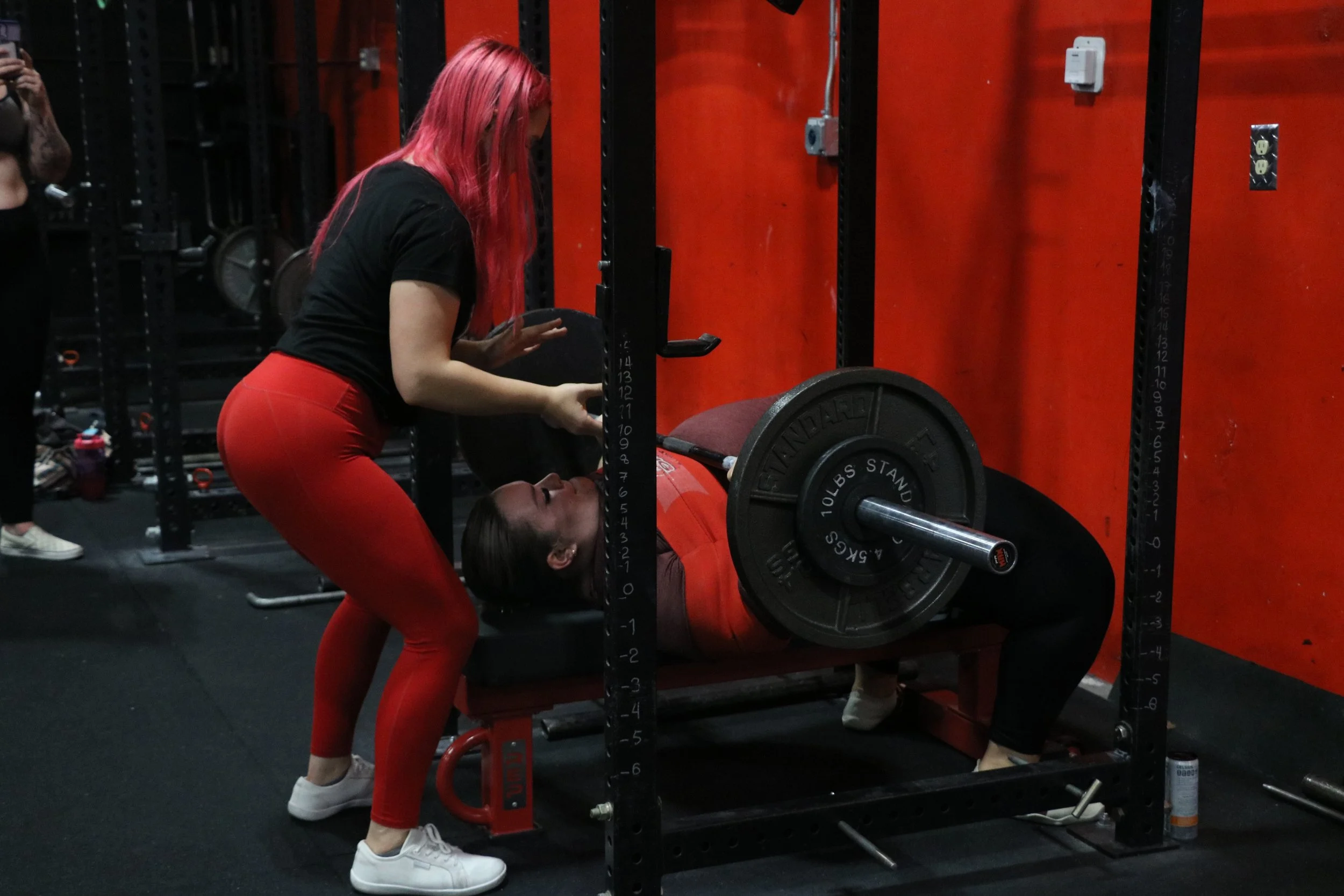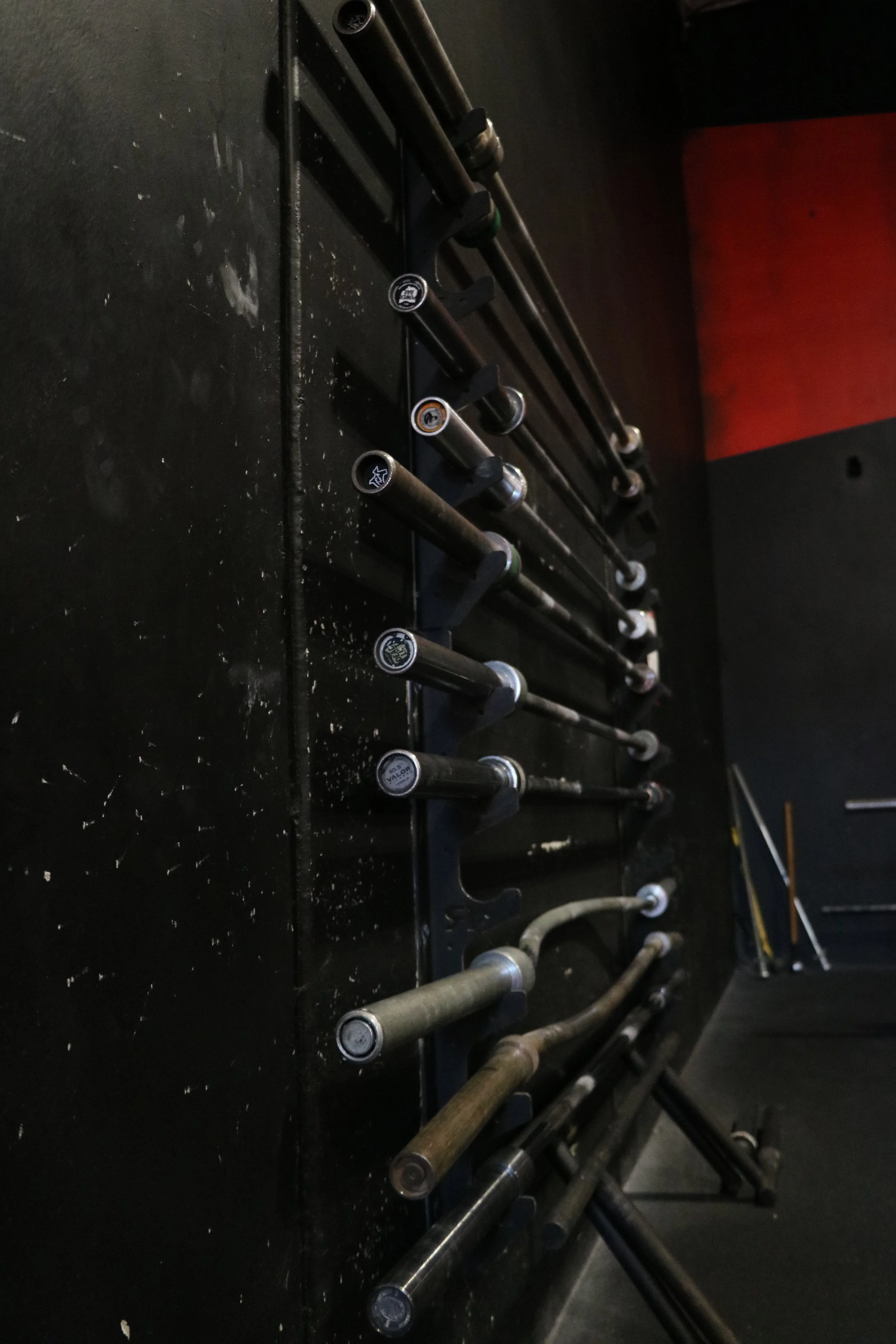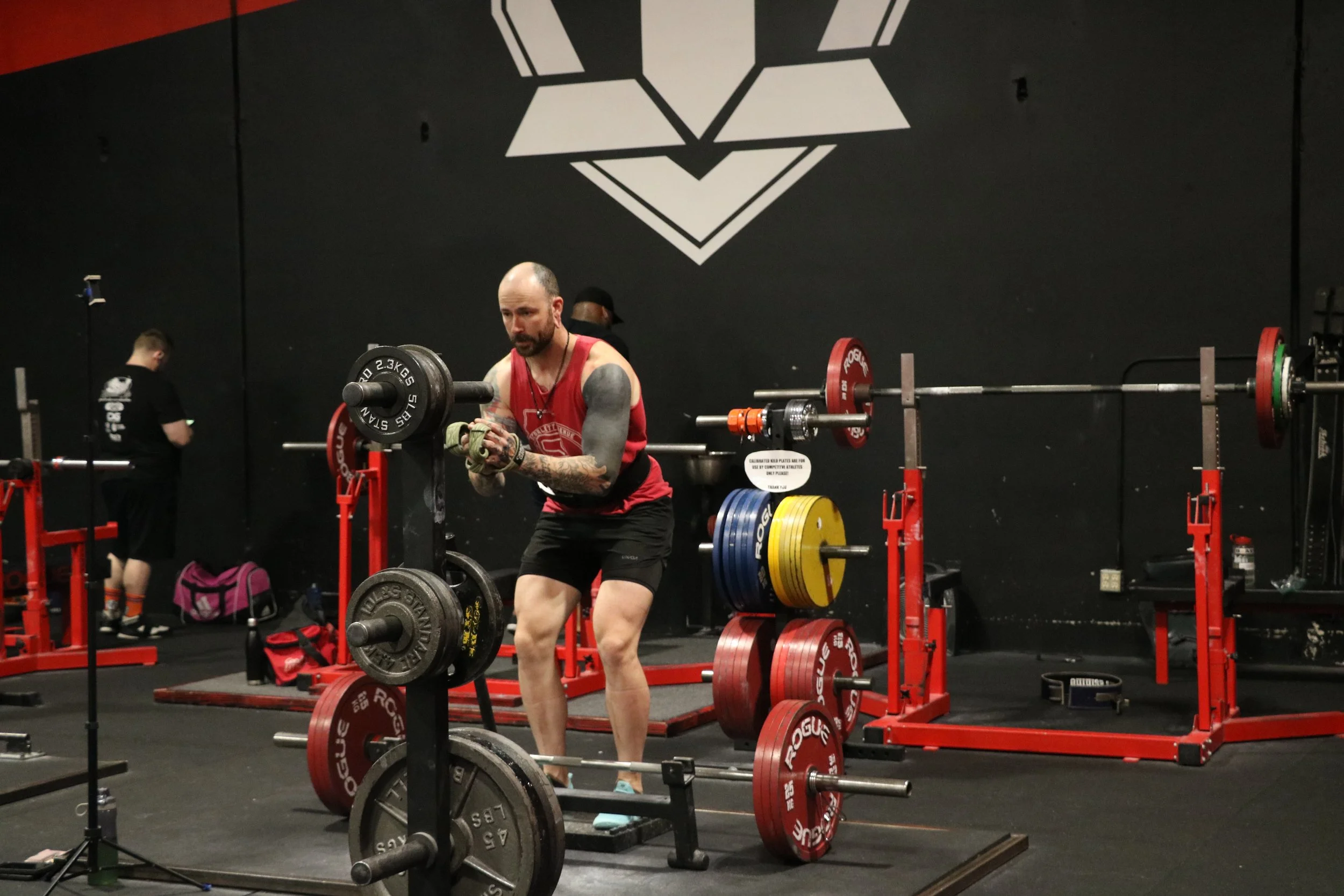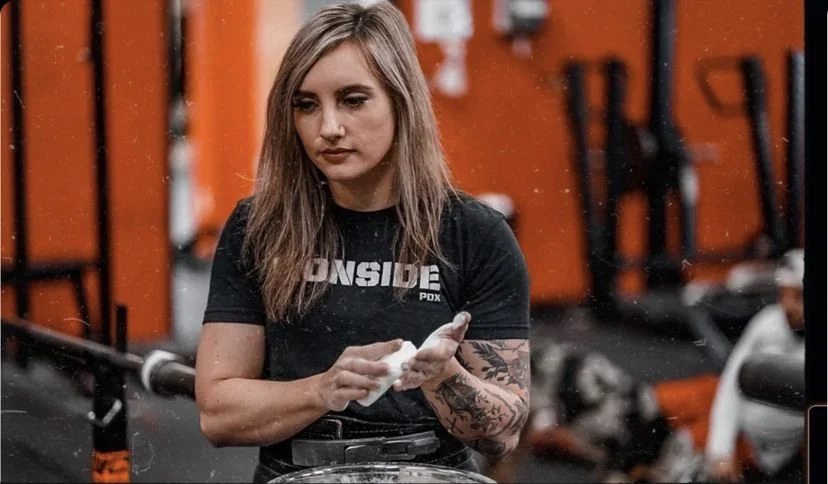Using Overload as a Training Tool
Heavy weights. It’s what we all crave as Powerlifters. We love watching those numbers increase. And this process is even more fun when you find a variation that allows you to use even bigger weights. While Overload tools are certainly enjoyable, using them can benefit your programming, too. The key to reaping these benefits from Overload is to avoid overusing it. When done sparingly, exposing yourself to greater percentages can provide a helpful stimulus to break a plateau, modify pain, build weak points, and reach that next PR. Let’s discuss what Overload training is, the different variations that include it, why you’d want to incorporate it, and how to go about that process, so you can unlock that new number without reaching staleness.
Examples of Overload Techniques
“Overload” refers to anything that allows you to work with heavier weights than you typically would in a given lift. This method often includes de-loading the weight at the bottom portion of the rep, where you’re working the hardest against gravity- and the load gets progressively heavier as you approach lockout- the opposite of a typical lift. Overload can also be done via a reduced range of motion- taking out the part that’s hardest for you.
Here are some examples for each lift:
All 3:
Chains: Chain weight gets unloaded at the bottom and progressively increases as you approach lockout- so it’s heaviest at the very top.
Reverse Bands: Assist you at the bottom of the movement, where, as you’re standing up, you’re feeling the entirety of the weight.
SQUATS:
Hatfield Squats: This variation allows you to train the movement to full depth, but the handles assist you on the way up, allowing you to handle heavier weights.
BENCH:
Block Bench: Benching with a board/block on the bar reduces the range of motion. Most lifters are weakest off the chest- so you can train with greater loads through that mid-range/lockout portion.
Slingshot Bench: Created with those experiencing shoulder pain in mind, the Slingshot takes some of the weight off at the bottom, where you’re holding the entirety of the load at lockout. You get additional momentum off the chest, helping you use heavier weights.
DEADLIFTS:
Block Pulls: Specifically for Sumo Pullers, elevating the bar 2-4 inches off the floor removes the hardest part (right off the ground), so you can pull heavier weights to lockout. For Conventional, this may not be the case, as many lifters struggle with the mid-range portion of the lift, but it depends on your weak point. Super high block pulls (6-8 inches off the ground) would be an overload technique for everyone.
Trap Bar: While typically used as a technique enhancer, quad-builder, or introductory deadlift variation, it can also be an overload tool for Powerlifters. Trap bar deadlifts have less range of motion, and because you hold the weight on the sides, it’s a more efficient pull- allowing you to use heavier weights, too.
These are all solid options for providing supramaximal loading- depending on what you specifically want to work on & the why behind your programming, which is individualized.
2. Why use it
First and foremost, Overload is enticing and sexy- we know that much. But what true purpose does it provide in your training program?
A) CNS adaptation
Overload tools help your CNS adapt to heavier weights. What does this mean?
Your central nervous system is composed of the brain and spinal cord and is responsible for carrying out every action you perform. It's known as your "command center," and controls your thoughts, movements, automatic responses, etc.
If you voluntarily move your arm, your CNS leads you to do that.
When you perform a back squat, your CNS allows you to execute it.
Your CNS coordinates with your body to allow you to move in the first place.
How does this relate to heavy vs. light weights?
When you’re training in those lighter percentages all of the time- they have a certain “feel.” Your body gets used to that feeling, anticipating it.
Heavier weights demand more from you: more focus, more effort, motor coding, neuromuscular control, etc. That’s why, as we get closer to a meet, we increase intensity: so your CNS can get accustomed to successfully handling heavier loads.
Overload helps your CNS become accustomed to these weights- how they feel and the neuromuscular coordination (brain-body connection) required to lift them.
Maybe you can’t physically squat 300 yet.
But if your body can feel that weight, creating an environment that allows you to get under it and stand back up, theoretically, it will feel more doable when you officially attempt it. You’ve introduced yourself to it, your brain has gotten used to the sensation, and done the work to help you squat it already. Exposing the body to greater loads forces you to adapt to the stimulus, and confidence improves under those weights in the future.
If you get a taste of those weights first, you may be more likely to lift them without assistance.
Plus, when used sparingly, Overload can be a novel stimulus- your body isn't used to training with such heavy loads, and once exposed to them, the variety alone can help boost your strength.
B) Target different sticking points
Overload tools either change the range of motion entirely or alter the loading pattern. Therefore, the strength curve (where the lift is harder/easier) is adjusted- which can be helpful for addressing a weak point in your reps.
With these variations, you can directly target mid-range/lockout portions of a movement. Building strength in a weaker range of motion improves your performance in competition lifts.
Chain Squats can help you improve your mid-range strength, recruiting your quads.
Block Benches can make for stronger lockouts, building your triceps.
Block Pulls can also improve your lockout strength, making them snappier and more efficient.
Even if you typically fail at the bottom of a squat/off the chest/off the floor- other parts of the movement may need more confidence, work, and efficiency. Certain overload techniques can serve this purpose: reaching two goals with one. Attack your weaknesses to build your strength.
C) Build Mental Confidence with heavier weights
Yes, this is similar to the CNS point, but hear me out.
With heavier weights, most of that success is entirely mental. Maybe you physically had the strength, but you got in your head, chickened out, doubted yourself- and then failed it.
Overload can help you face this fear, exposing you to this added stress: because, let’s get real: as a Powerlifter, you’ll have to get confident and comfortable with spending time under heavy weight. If you can take the opportunity to lift even heavier weights than you train with, gaining assistance through the most grueling part, you can gradually begin to conquer that self-doubt. You become accustomed to what it feels like, each rep adding layers of self-efficacy, reminding you that you’re strong and capable. The only way to overcome a fear is to confront it, and- especially when necessary for sport, exposing yourself to that discomfort will make you better.
Self-belief is an integral aspect of hitting PRs- and when you lack it, it shows. Building this in an environment that intimidates you (a heavy squat, etc.) will allow you to reach new heights down the road. Simply programming a variation to increase this facet of your lift may be what you need to break past that number that’s held you back.
D) Reduced joint stress-
Many factors can contribute to pain, but this is another potential one. You may think that increasing the weight of an exercise would only increase pain, but there’s more nuance to it.
For many lifters, there’s a certain point of the range of motion that’s particularly aggravating: full-depth, heavy squats may hurt the knees, too much sumo from the ground may flare up the hips, pressing off-the-chest in a bench press could irritate the elbows, etc. Keep in mind, it’s still important to train these lifts to a full range of motion, a) because lightly exposing the body to pain is helpful in healing, and b) because we need them as Powerlifters, BUT: going heavy on them all the time, in every training session when experiencing pain, probably isn’t the best idea.
Maybe simply modifying your range of motion or the load used in that range of motion is what you need to stay healthy & maintain longevity.
Overload allows you to do this without just stripping weight off the bar & moving light weight. You still get a training effect, receiving that exposure to the heavier weights- but differently, in a way that may be less aggravating to sensitive areas.
With chains, some of the weight is de-loaded at the bottom, so if you’re experiencing elbow/knee pain from heavy loads in those end ranges- most of that weight is removed. And you're still challenged throughout the mid-range/top portion of the movement.
A Slingshot de-loads some of the weight off the chest, and a board takes it out entirely, which could help shoulder/elbow pain while training lockout strength.
Block pulls remove the portion off the floor, so if your hips get angry with high-frequency sumo, you can potentially train the less stressful part.
Training and rehab are not separate: they are interrelated, and this is one of the many applications in which they coincide.
-
There are many potential reasons you’d include Overload in your programming, but how you go about it can, undoubtedly, determine your success with the tool. Simply adding chains and slingshots to all your SBD reps, maxing them out, and feeding your ego is unproductive and counterintuitive. Instead, here are some tips on how to include Supramaximal loads intelligently:
3. How to incorporate it into your programming
A) Beginners likely don’t need it.
I don’t add chains or slingshots to my beginner athlete programs until they’ve been training consistently for months, have a solid base, and there’s a reason to do so. Why? Lifters should focus on building a technical foundation with the primary lifts first- maximizing their potential. Beginners don’t need to train with supramaximal loads- they have plenty of newbie gains to attain from repeating the big 3, developing technique, work capacity, and strength in them. Why introduce these tools before they’re truly necessary? It’s better to wait until they’re appropriate, so you don’t develop staleness in them or impair technique. As a new Powerlifter, your time is best spent building foundational strength- setting you up for success in the long run. Train the basic lifts over and over, getting as strong and proficient in them as you can, and then once you plateau, other variations may be beneficial.
Of course, things like Trap Bar and Hatfield Squats may have a place for beginners- if struggling with depth, mobility issues, technique, proprioception, etc.: I’m strictly referring to programming with the GOAL of Overloading.
B) Use as a secondary variation for a block or two.
Overload should not replace your primary lifts. The specificity isn’t high enough, and as a Powerlifter, you want to train a variety of intensities. ONLY performing overload lifts,
Doing them instead of all other variations,
For multiple blocks-
will lead to staleness in these lifts,
potentially deter your technique and strength in your primary ones,
and ultimately, get you further away from your goals.
Chain Squats should only supplement your "Comp Squat"- because there are no chains in competition! And training that raw strength out of the hole is an integral aspect of the Raw Squat, so it shouldn’t be neglected.
Instead, one way is to use supramaximal loads as a secondary variation. Let’s say you've got your Main squat day: composed of Low Bar, and your secondary one incorporates chains. Or, you have a Competition bench press day and are using the Slingshot on another bench day.
That way- you can still train your primary lifts while receiving the benefits of Overload techniques. I typically only include these variations for one block at a time- that’s usually all you need. And don’t include it too often- you want it to provide a novel stimulus and train OTHER variations, too. Every couple of months is usually a solid frequency.
C) As a main or secondary lift of the day-
In a lower-specificity block, you may use Overload variations to replace your primary lifts, like a Block Pull or a Reverse Band Squat, focusing on building up this specific movement. This method can work- but should be avoided closer to a meet- because training the competition lifts themselves is the priority.
Additionally, you can program two variations on the same day- one using Overload and one not.
Maybe you work up to heavy squats with chains, then take the chains off and perform "Back-off sets": so you receive the benefit of the exposure to higher loads while still building up your comp squat.
Or, same reasoning, a heavy Slingshot Bench followed by "Backoff sets."
You can also do it in reverse: Do your main sets first, then add the Slingshot/Chains/Blocks for a few sets after. This method could help you get used to feeling heavy weight under fatigue,
prioritize your main movements first,
and add extra volume with a higher percentage.
There are many ways to go about it, but the point is: don’t let Overload variations replace your competition lifts, especially not for extended periods.
D) In strength/peaking phases-
When to include Supramaximal loads?
Well, if the primary goal is to adapt to & get comfortable with heavier weights, it makes sense to place them closer to a meet, in a strength or peaking phase.
In a strength block, Overload tools can help you build up your maximal strength & expose you to potential PRs you’ll go for during your peak. These variations can also be used as strength work in the off-season- especially if there’s a specific lift you’re trying to build up. If you're struggling with squat confidence, focusing on targeting that with Reverse bands or Hatfields outside of prep can help you down the road.
In a peaking phase, Overload again helps your CNS become more accustomed to getting under heavy weight in the short term, so when you go for your true SBD PRs, the weight doesn’t feel as scary. Specificity is key- but the ability to strain & feel comfortable with high percentages is specific to a peaking phase.
E) Volume-
While if the goal is simply to build strength, doing high-rep chain squats doesn’t make sense, some Overload variations can be conducive to Volume blocks. Things like Hatfields, Slingshots and Trap Bar add variety to your training, target weaknesses, and allow you to hit rep PRs with heavier weights, build confidence and consistency, and are solid options for hypertrophy.
There are many ways to program Supramaximal lifts, but the principles and methods remain: don’t overuse these variations and don’t turn them into primary lifts. Specificity is king, always.
-
Overload. It can be an exciting and enticing way to boost your ego and confidence in your main lifts. It’s also a solid training tool for helping your CNS adapt to heavier weights, targeting certain sticking points, and reducing stress off your joints. However, lifters can easily get carried away, becoming too tied to these variations- which defeats the whole purpose. Instead, include them for a block or two, here and there: either as a secondary variation or paired with your main lifts, rather than replacing them entirely. That way, you can reap the benefits, supporting rather than derailing your comp numbers. Use it occasionally to help you break through plateaus, and enjoy the fun while it lasts!
















